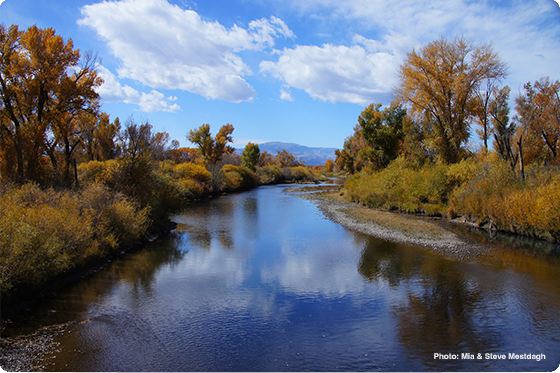Blog
- Home
- ▸
- Blog
- ▸
- August 2024
- ▸
- Conflict on the Rio Grande: the Battle Over Water Distribution in the American Southwest
-
Conflict on the Rio Grande: the Battle Over Water Distribution in the American Southwest
- August 6th, 2024 — by Collin Dowson — Category: Groundwater
- Tweet
-

For more than a century the Rio Grande—a river which snakes through Colorado, New Mexico, and Texas, before continuing south into Mexico—has been the focus of a number of important negotiations. Arguably the most important of these agreements has been the Rio Grande Compact, signed in 1938 by all the states who touch the river. Under this Compact, Colorado agreed to deliver a set amount of water each year to New Mexico, who in turn would deliver a set amount of water to the Elephant Butte Reservoir. Texas v. New Mexico, 583 U.S. 407, 410 (2018). This reservoir, which is more than 100 miles north of the Texas border, was chosen because of the key role it plays in multiple pre-existing agreements, including a 1906 treaty between the U.S. and Mexico, and a series of deals collectively called the “Downstream Contracts,” under which the U.S. releases water from Elephant Butte for the use of communities in New Mexico and Texas. Id. at 411.
In 2018, Texas sued New Mexico, alleging that increased groundwater pumping in the area between Elephant Butte and the Texas border was causing Texas to receive less water than it was entitled to under the Compact. As a dispute between states, the conflict represents one of the few issues over which the Supreme Court has original jurisdiction, meaning that the court was the first to hear the case, with no need for an appeal from a lower court. The court appointed a Special Master to oversee the proceedings. A Special Master is an official who is appointed by a court to perform some court-like functions, such as hearing arguments and overseeing the opening phases of a trial, before providing recommendations on how the court should rule.
Out of concern for the effect New Mexico’s pumping might have on the Downstream Contracts and its treaty with Mexico, the U.S. asked for permission to intervene in the litigation, wanting to make largely the same claims as Texas. In 2018 the Supreme Court unanimously ruled that the U.S. would be permitted to join the litigation. The court granted this permission because it found that the U.S. had “distinctively federal interests” which could only be defended through U.S. participation. Id. at 413.
After this 2018 decision, proceedings continued for several more years until, in 2024, New Mexico and Texas were able to negotiate a consent decree. A consent decree is a type of settlement agreement which parties take to a court for approval, giving it the same force as a judicial decree. Under the Consent Decree, New Mexico would be allowed to continue its increased pumping, but the water due to Texas would be measured further south, at a point near El Paso, helping to ensure that Texas would receive the correct amount of water. Texas v. New Mexico, 144 S.Ct. 1756 (2024). The U.S. objected to the Consent Decree, arguing that if the Court granted it, the U.S. would be prevented from being able to defend its interests.
In a split decision, the Court again sided with the U.S., agreeing that the decree could not be approved, as it would impermissibly dismiss the U.S.’ claims without its consent. The dissent defended the decree, arguing that it was improper to force the states to continue litigating when they had reached an agreement, and also claimed that the U.S. had essentially hijacked the litigation to serve its own interests. With the Consent Decree denied, the case now returns to litigation, with the Special Master remaining to oversee future proceedings.
Stay Current with
Our Publications
Subscribe today to our free
quarterly publication, The SandBar
— and to our monthly newsletter,
the Ocean and Coastal Case Alert.
Blog Post Archive
2025
2024
2023
2022
2021
2020
2019
2018
Blog Post Categories
Admiralty Aquaculture
Clean Water Act
COVID-19
Coastal Management
Endangered Species
Environmental Justice
Environmental Law
Fisheries
Flooding
Groundwater
Hurricanes
Insurance
Invasive Species
Litigation Briefs
Marine Debris
Marine Monuments
Miscellaneous
Natural Disasters
Offshore Energy
OSHA
PPP
Seafood
Staff
Torts
Water Quality











